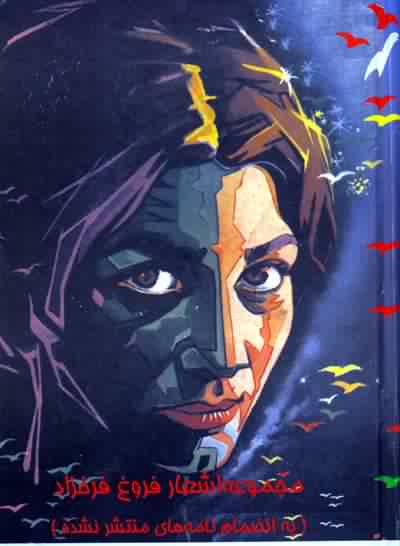
A Biography
Forough, a woman not like any other

![]()
| by: Melinda
Barnhardt
The modern Iranian Poetess Forough Farrokhzad (1935-1967) virtually "opened the windows" of Iranian poetry to real relationships and the real world. While Persian poetry had already been somewhat liberated by the free verse of the 1920s, her frank presentation of feelings about loving, sexual relationships was revolutionary. She did the unthinkable, not only writing about intimacy in a predominantly Shiite Moslem society, but writing about it from an utterly honest, utterly feminine point of view. Without fear, she said what had always been forbidden, inwards that had never before appeared in a literary work. Incredibly, her impressive ability caused initial shock to give way to the overwhelming admiration of the educated and the young. Secure in her voice, she broadened her concern to include natural, honest relationships within the Iranian social order. Finally, she began to emphasize a dialogue with the rest of the earth, and an openness to the entire natural universe, as her once specifically Persian images of fundamental relationship (the wall, the window, the mirror, the streets, and the garden and the sun, etc.) were suddenly galvanized with universal force. Perhaps she dared fate by her extremely public living of a life that defied stultifying restriction. The daughter of a military colonel, she married at sixteen, published her first volume of poems at seventeen, gave birth to a son at eighteen, and was divorced before her twentieth birthday. Not long after the divorce she was prevented from seeing her son ever again. Her increasingly mature volumes of poetry included The Captive, The Wall, Rebellion, the important Another Birth, and the posthumously published Let Us Have Faith in the Beginning of the Cold Season. She studied film production as result of her liaison with the Iranian intellectual and film maker Ibrahim Golestan, and won the prize for documentaries at the 1963 Uberhausen, Germany Film Festival, with her film about a leper colony in Tabriz, Iran. In 1965, UNESCO produced a 30 minute film on her life, and Bernardo Bertolucci, a 15 minute film. In 1967, she was planning to play the lead role in a Tehran stage production of her Persian translation of Shaw's St. Joan, when she met her untimely death in an automobile crash.
By Michael Hillmann
|